Highlights from Kochi Biennale: Soil, Sustainability, and Community at The Soil Assembly
Published 22 March 2023 by Julian Chollet
“The Soil Assembly” is an international gathering of plants, microbes, humans, fungi, algae, seeds, and other practitioners in the web of life, emphasizing the importance of (bio)diversity and the interconnectedness of all living beings. It took place from 1st to 5th February 2023 at the Kochi-Muziris Biennale in southern India. Here Makery summarizes 16 hours of inspiring presentations and panel discussions.
The hybrid online/offline gathering of soil enthusiasts was organized by the Srishti Manipal Institute of Art, Design and Technology (SMI) and curated by Ewen Chardronnet (Makery’s chied editor), Maya Minder, Neal White and Meena Vari (SMI). By discussing perspectives from various disciplines, The Soil Assembly seeks to inspire and educate a broad audience about topics such as soil ecology, the transportation of food and feed and their impact on climate change, as well as ‘living pedagogies’ practiced in art and design schools all over the world. It is a celebration of the diversity of practices related to these topics and a reminder that everything is connected in a web of life that extends beyond the borders of disciplines and countries.
This article attempts a chronicle of the first 3 days of The Soil Assembly. It includes a short summary of all 24 speaker contributions and the subsequent discussions. Days 2 & 3 began with workshops that would surely deserve their own article, day 4 was dedicated to several short films related to the topics, followed by a panel discussion. Day 5 featured a final panel with the organizers to sum up the event and the screening of the film “The Mushroom Speaks” by Marion Neumann.

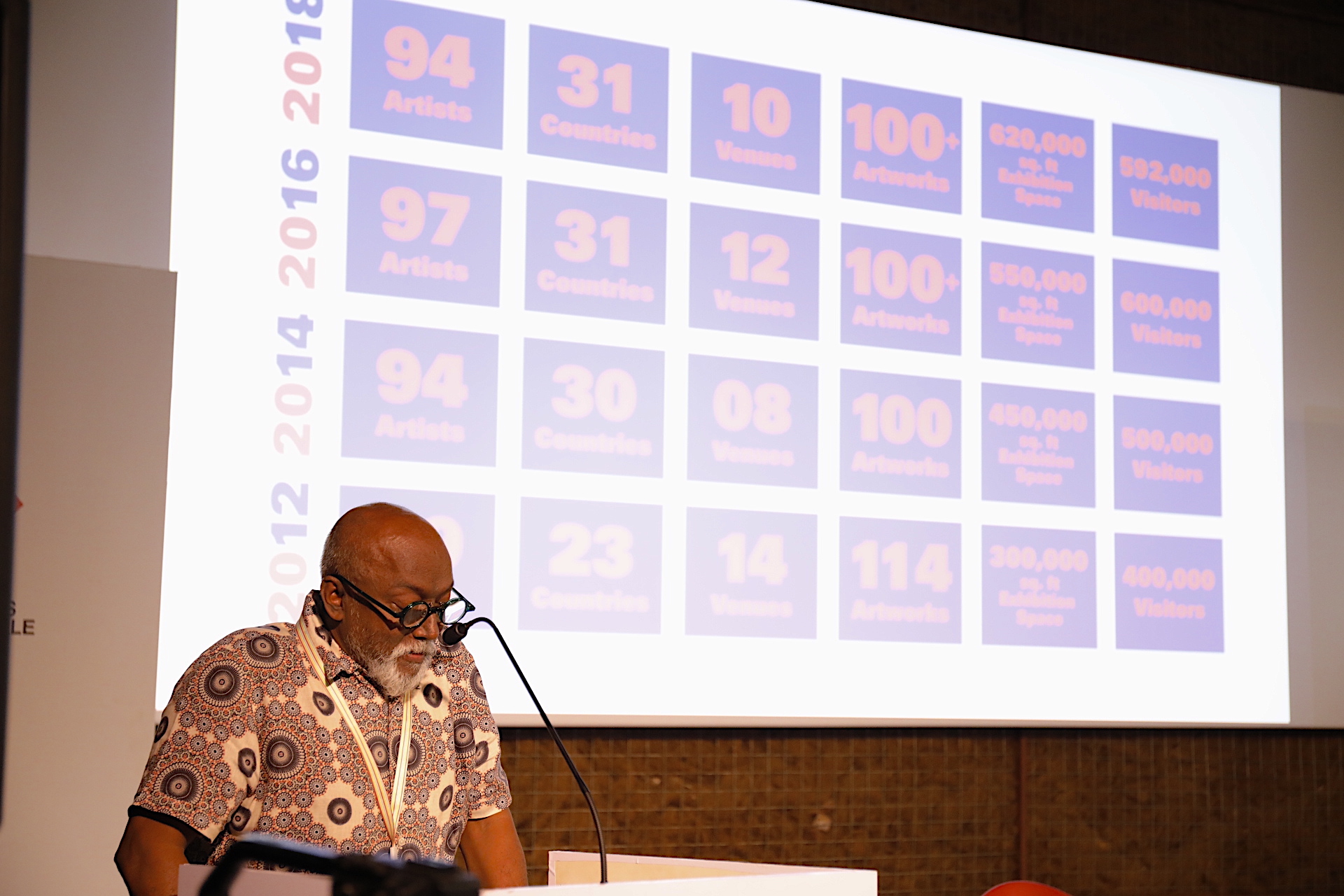
Day 1, Ecological Futurisms and Soil Ecologies
During the opening speeches the interdisciplinary nature of the gathering was highlighted by Dr. Geetha Narayanan, founder of the Srishti Manipal Institute, who also expressed her hope that it will mark the beginning of a movement “to build a sustainable and creative world to our own efforts”. After further inspiring introductions by the curators of the assembly, the first round of presentations focused on “Ecological Futurisms”, a collective of artists and researchers based at the Centre for Research and Education in Arts and Media (CREAM) at the University of Westminster. The collective explores the intersection of art and ecology to imagine possible futures that are sustainable and just. Uriel Orlow, Neal White & Tina O’Connell, were joined by Cédric Carles (Atelier 21) and Vasanthi Dass (SMI) and during the panel discussion that followed the presentations, a central topic was the role of art in addressing the multiple crises that humanity faces. Artistic methods can not only be used to make research accessible for a wider audience that does not read academic journals, but also to broaden the horizon of scientists who can become too entrenched in their respective fields to see the bigger picture.
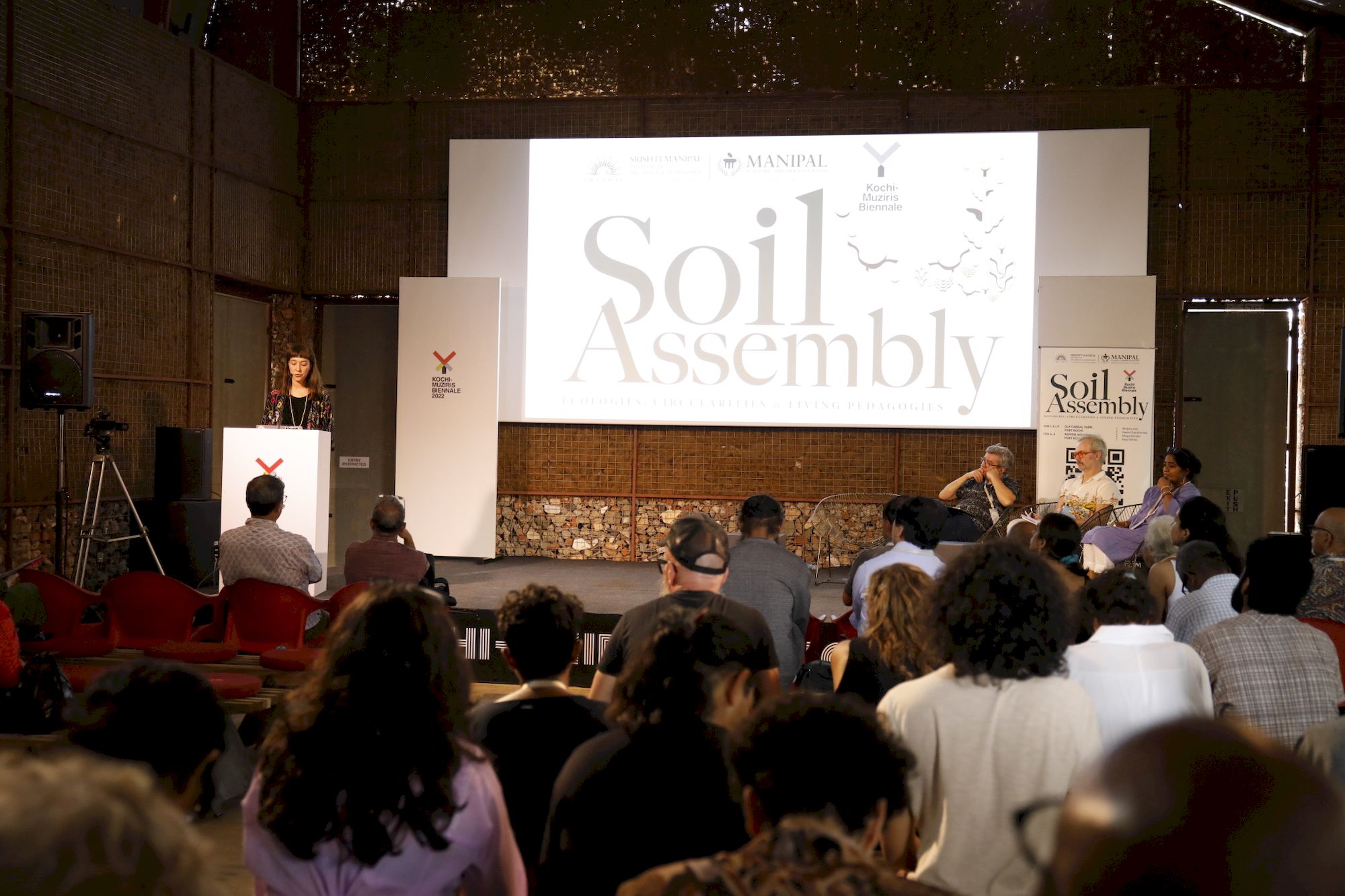
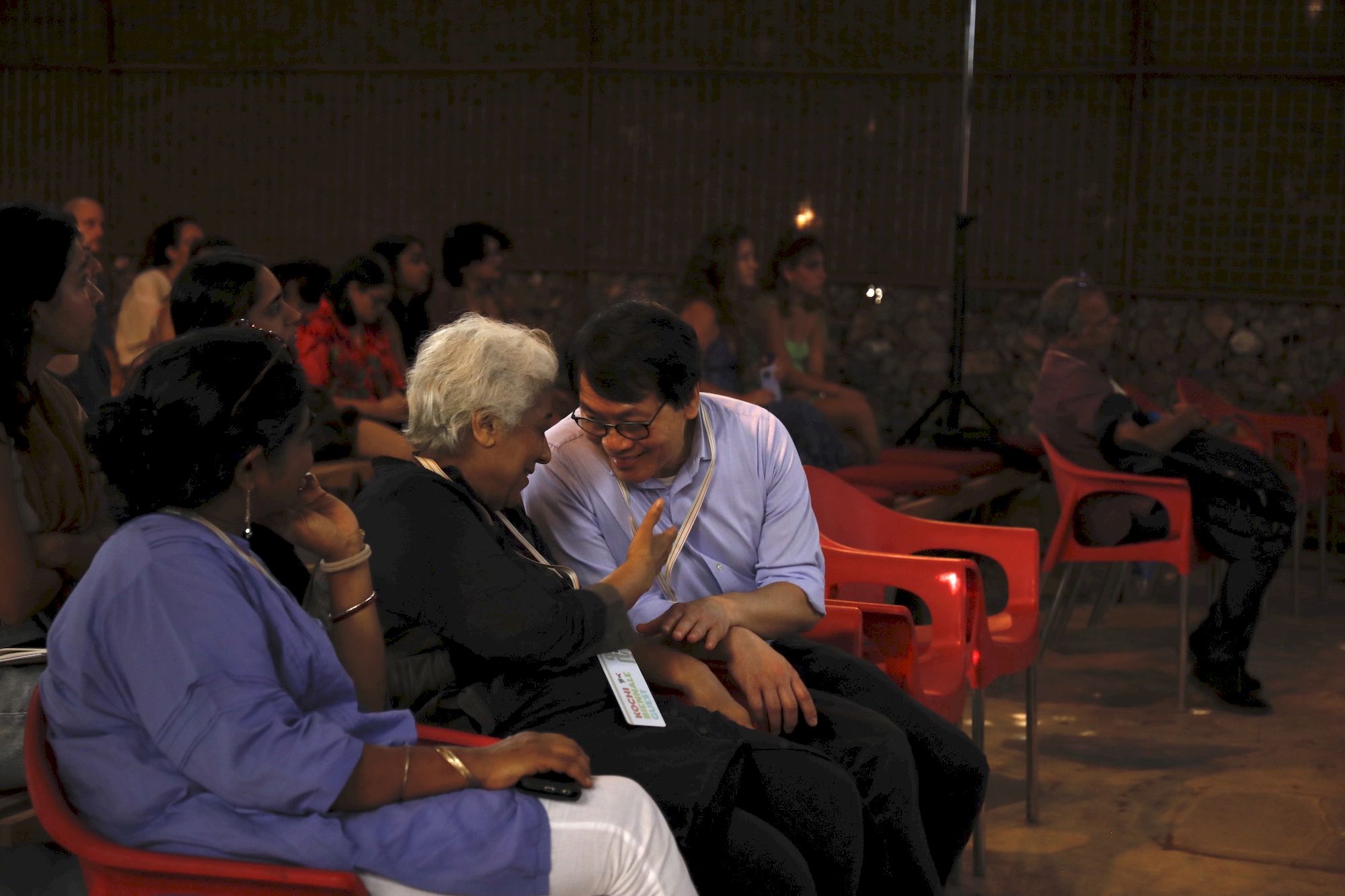
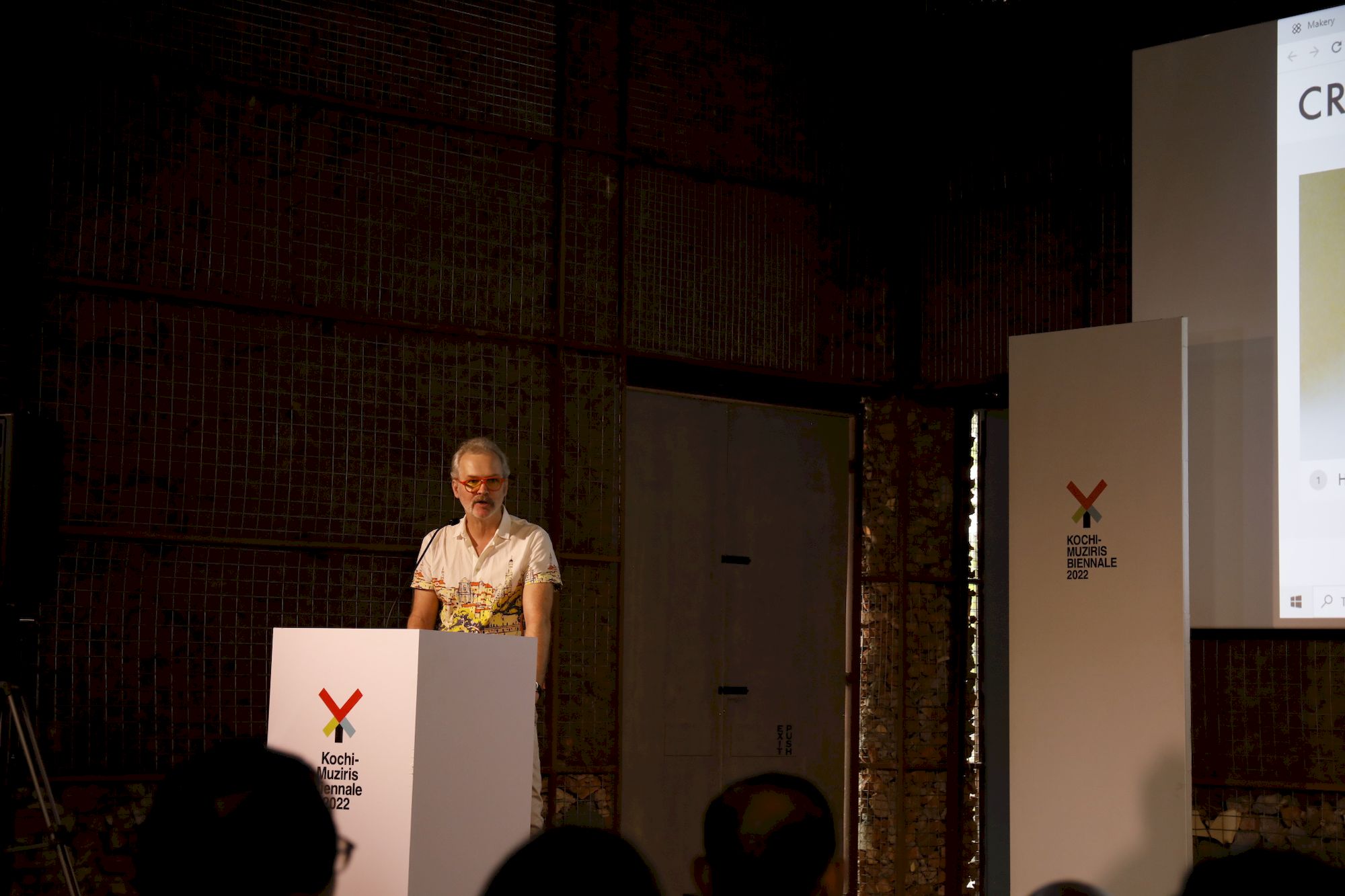
The second session of presentations moderated by Elisabetta Rattalino featured speakers from several groups that approach the topic of “Soil Ecologies” from very different perspectives. Malte Larsen presented the work of both the mikroBIOMIK Society and the MIYA association, highlighting projects related to community building, mushroom cultivation, urban forests, and soil regeneration. The audience engaged in a discussion, asking questions about urban wildlife habitats, techniques for improving soil quality and natural pest control. Another important topic that was raised concerned the value of old growth forests and the difficulties with artificially recreating these systems using the Miyawaki method.
Artist and philosopher Baruch Gottlieb presented DISNOVATION.ORG, an international research collective that works on the intersection of contemporary art, research, and hacking. Their activities strive to render large-scale complex issues, such as transitioning away from fossil fuels in the context of climate change, more tangible. Baruch’s presentation focused on the “life support system”, an installation consisting of a 1 m2 ‘farm’ that visualizes all inputs needed to grow wheat in a controlled environment. The system yields around 500g of wheat every 90 days with input costs between 200 and 600€. The project aims to highlight the importance of ecosystem services that are provided by healthy soils, rain, sun, wind, etc. – and concludes that growing staple food in artificial systems is not a reasonable endeavor. The discussion followed further down this path by highlighting the dead end that our current “disaster capitalism modus operandi” [Baruch] brought us into and the challenge to find alternative routes to a more sustainable food production.
The next presentation was given by Anne-Laure Franchette, a Zurich-based artist with a background in Art History and Fine Arts. As a member of TETI (Textures and Experiences of Trans-Industriality), she gave a short summary on several of the groups projects, including a short tour through their recent publication “Mobile Soils“. This collection of essays examines the role of soil as both a material and a narrative in our interconnected territories, while also reflecting on the authors practices and the ecological pressures we are currently facing. In the discussion the term ‘mobility’ was further explored as well as the concept behind the workshops and dinners that accompanied the book publication.
The last talk of this session was by Dharmendra Prasad, who told the story of the Deepor Beel wetland in Assam, India. Traditionally used for fishing and agriculture, the swamp, lakes and rivers of the area are now confronted with growing industrialization. In a series of drawings accompanied by short texts, Dharmendra takes the perspective of the wetland itself, a fish, a contributory river and a farmer who works the seasonally flooded soils. Using this wetland as an example, he highlights the contradiction between what he calls the ‘ecological notion of time’ and the ‘industrial notion of time’, followed by an examination of the relationship between knowledge, power, and agriculture. The talk concluded with a brief presentation on the activities of the ‘kNOw school collective’, which organizes workshops with children from rural communities. The discussion round delved deeper into teaching concepts that involve no syllabus, hierarchy, or age-based grouping and discussed the distinction between knowledge extraction and knowledge construction in different learning environments.
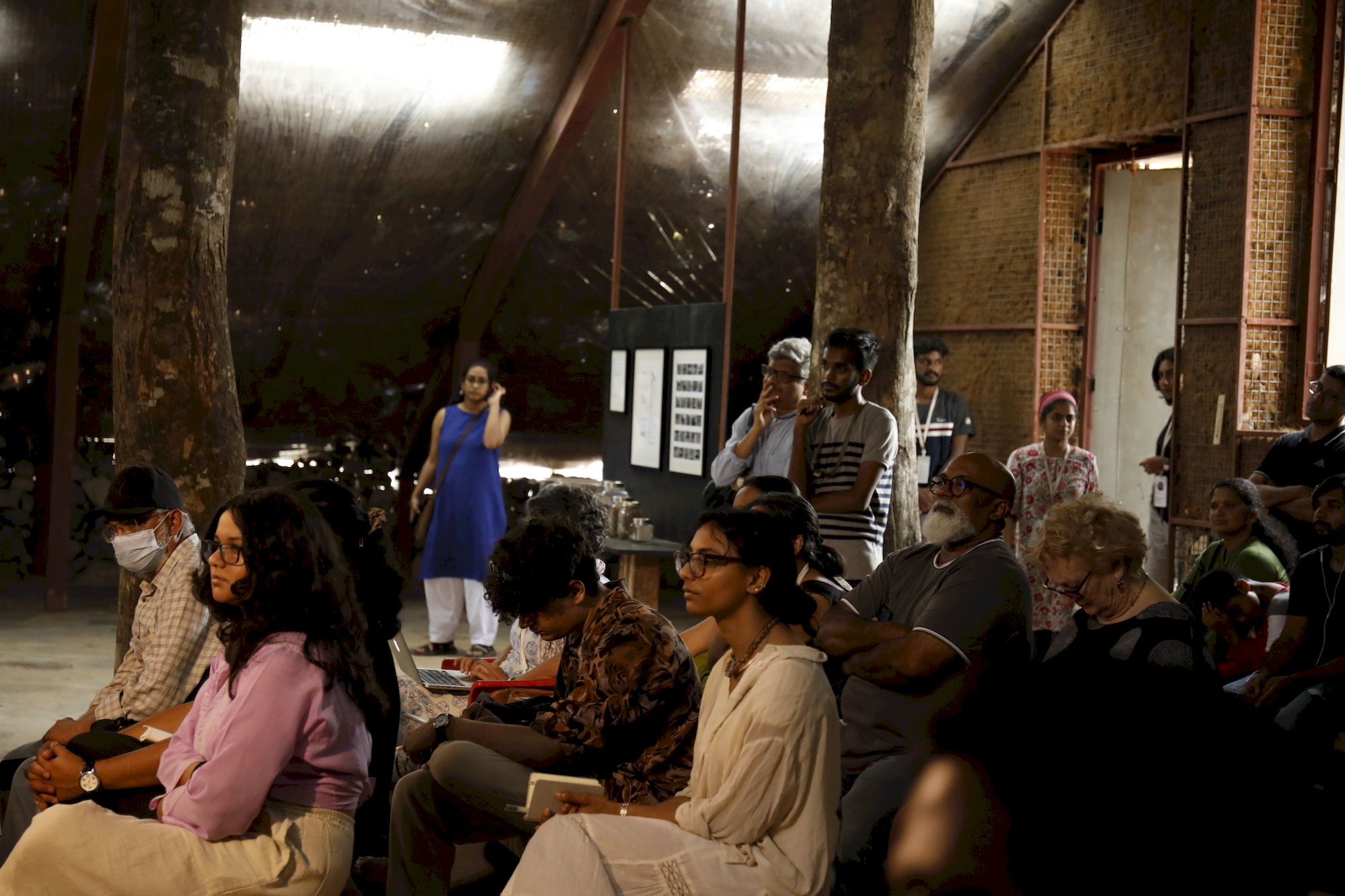
Second day, communities and pedagogies
The second day of The Soil Assembly began with 2 workshops: The “Living Sculpture” workshop by Kush Sethi and Aastha Chauhan invited participants to build a sculpture using found or recycled objects, wild seeds and plants. The workshop aimed to interweave the existing landscape and the created sculptures with stories of the past and future. The “Placing Arts with Food and Agri-Culture” workshop by Suresh Kumar focused on indigenous farming and gardening methods. It offered an opportunity to connect the participants with the local community and its surroundings while at the same time integrating food systems with arts and culture.
The first round of afternoon presentations was dedicated to the topic “Living Projects & Communities” and started with an initiative from Indonesia, called “Motherbank”. Ismal Muntaha, Bunga Siagian and George Clark presented the idea to achieve financial autonomy and collective action through leadership by the mothers of a community. More than just an alternative bank, the project succeeded in increasing the self-sufficiency of the local food production and created a regional market to exchange the surplus. Residencies and other events that were organized by the members of the Motherbank itself, acted as a tool for empowerment as well as a method to spread the practices into other parts of Indonesia. Moreover, from an initiative of the participating mothers, a band was assembled which is now touring through the country. The discussion circled around the importance of supporting rural communities and making them more resilient against the effects of climate change on the one hand and the violent pressure of industrialization on the other.
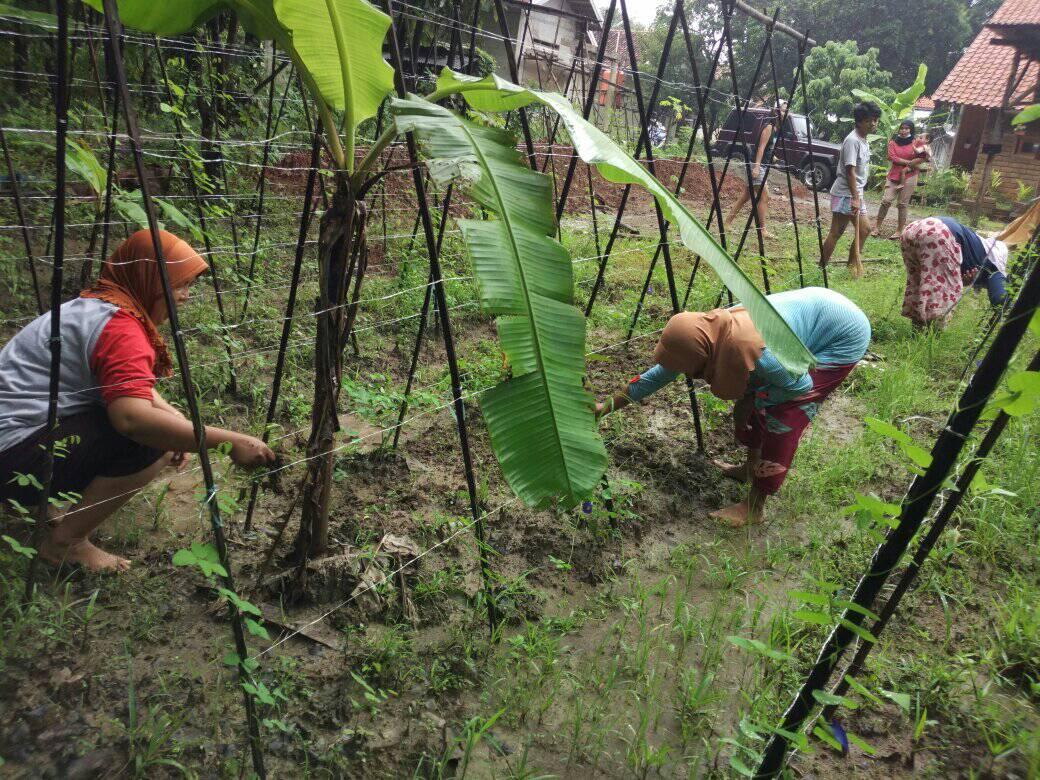
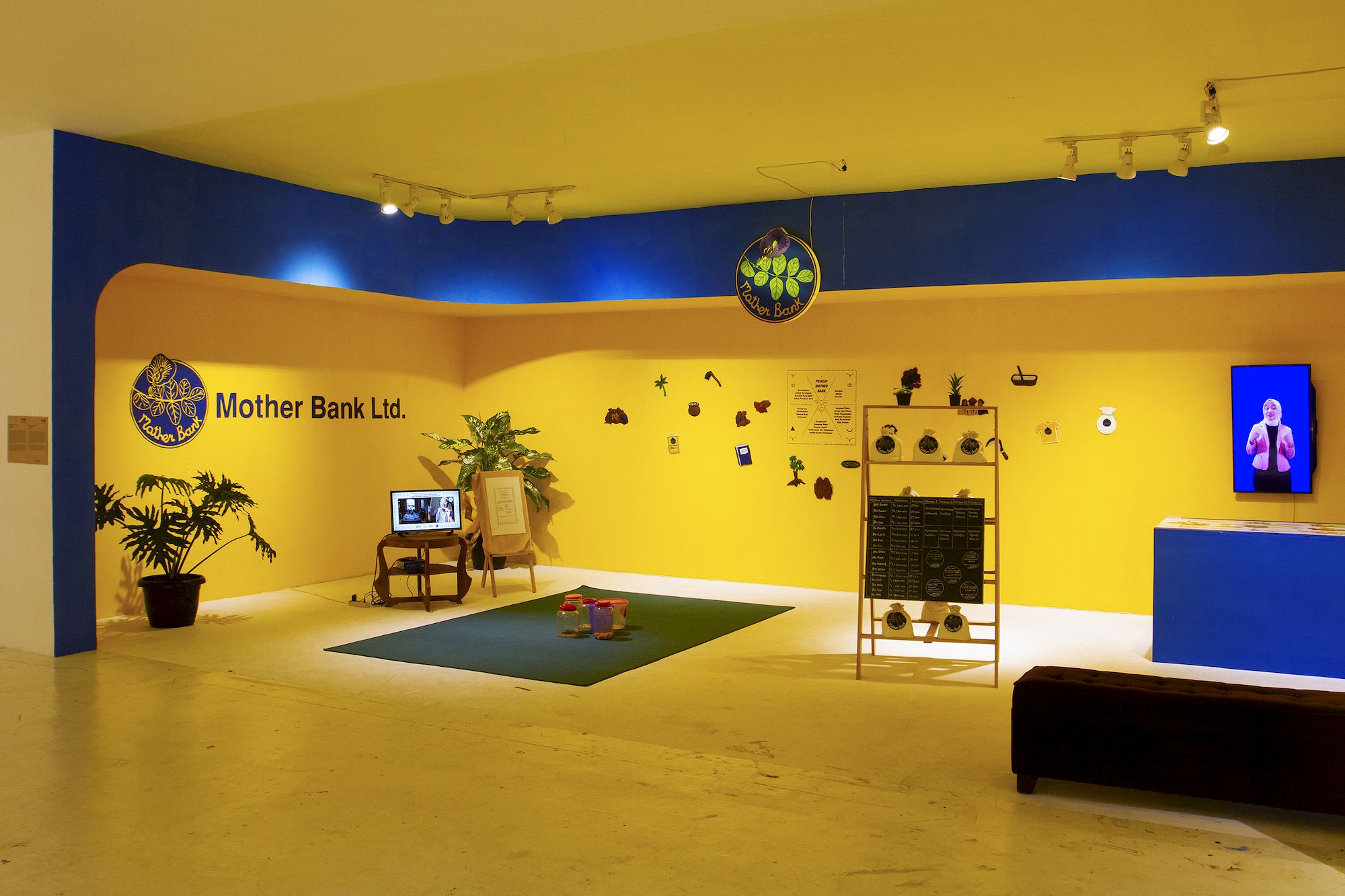
The session continued with the Laboratory for Ecology and Aesthetics represented by Dea Antonsen and Aziza Hamel, who focussed on their current exhibition project “Hosting Lands”. Still in its early stage, this decentralized rural exhibition movement involves numerous international partners and aims for a long term commitment. The collaborating artists and collectives are engaging in various forms of activism that support resilient social transformation and direct care for the earth and its inhabitants. Among other topics, the subsequent discussion revolved around different approaches of how to relate to land beyond the capitalist idea of property.
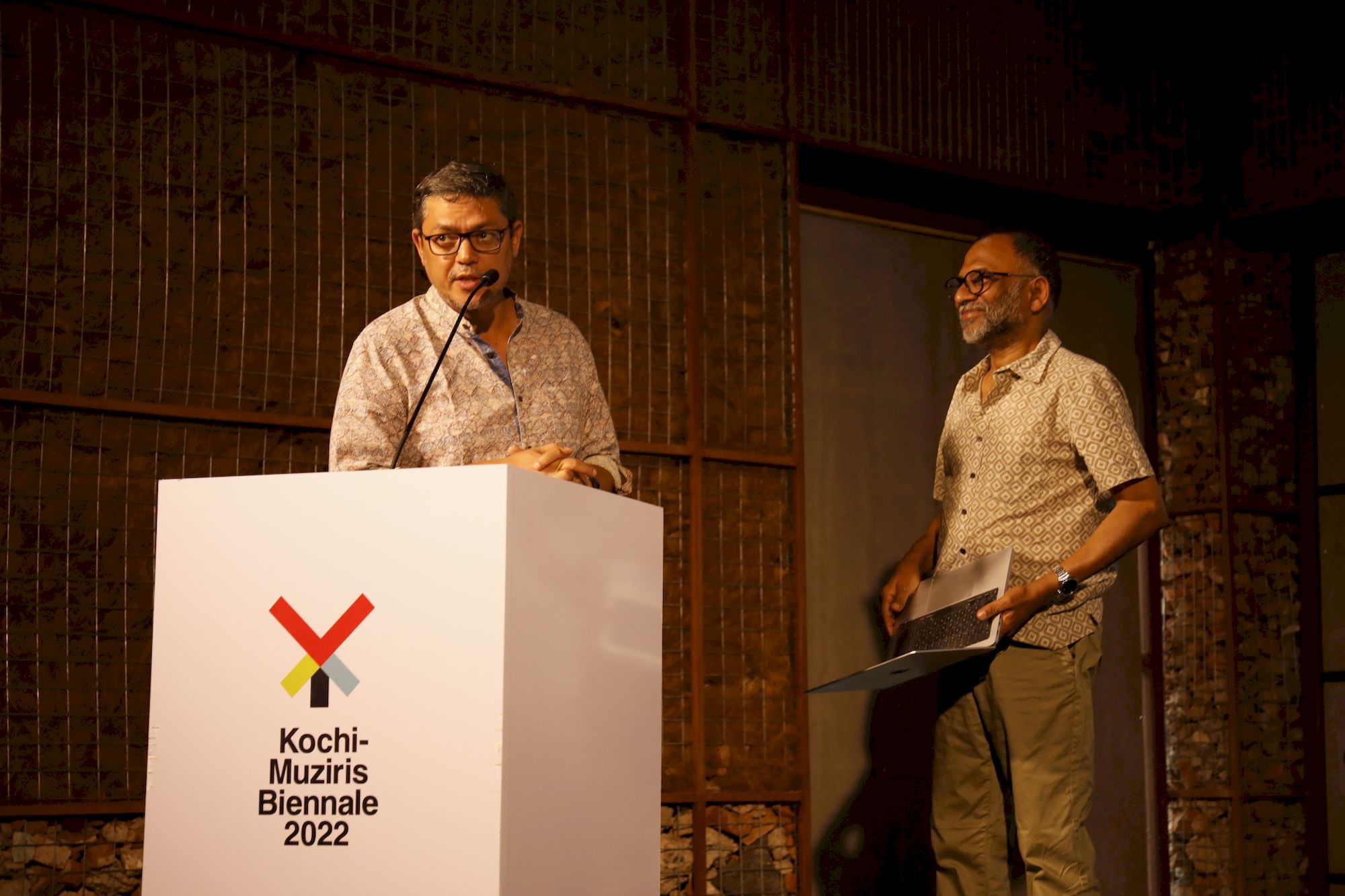
Ravi Agarwal presented the project “The Sea of New Sands”, about his 4 year long engagement with a local fishing community on the coast of Tamil Nadu, India. Short scenes from two films that resulted from the project, included ancient poems about the connection between love and landscape. Ravi contextualized these poems with images that show how this landscape is changed by rising sea levels and the industrious effort to contain them. He not only highlights the struggles of a community in transition but raises questions about environmental and multispecies justice. Far from romanticizing traditional communities and their social hierarchies, Ravi encourages us to learn from their ways of life as we navigate our own transition away from destructive practices.
As the last speaker of the session Vivek Vilasini gave us a glimpse into his inspiring artistic work, as well as the significance of permaculture in the establishment of his Food Forest in 2008. He portrayed his personal journey from reading Masanobu Fukuoka’s ‘One Straw Revolution’ and other authors to learning about the concept of multilayer growing, biochar and microbial inoculants. During the panel discussion that followed, participants explored a range of thought-provoking questions, including what the concept of ‘nature’ means to different people and the idea of an ‘ecological unconscious’. The discussion also touched on issues of oppression and struggle, the importance of recognizing the differences between historical experiences, and the need (but also dangers) of developing a common language for the communication around ecology.
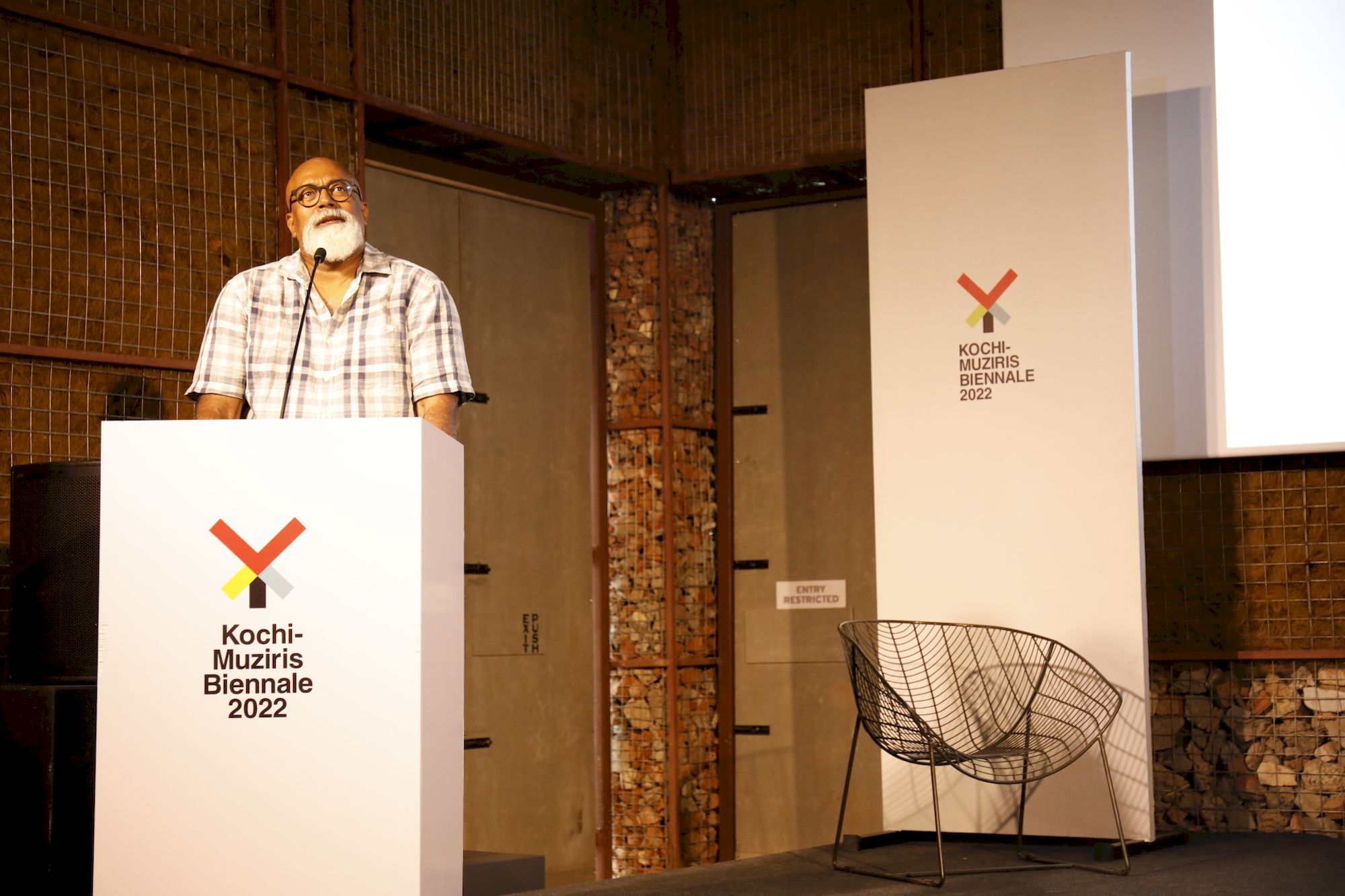
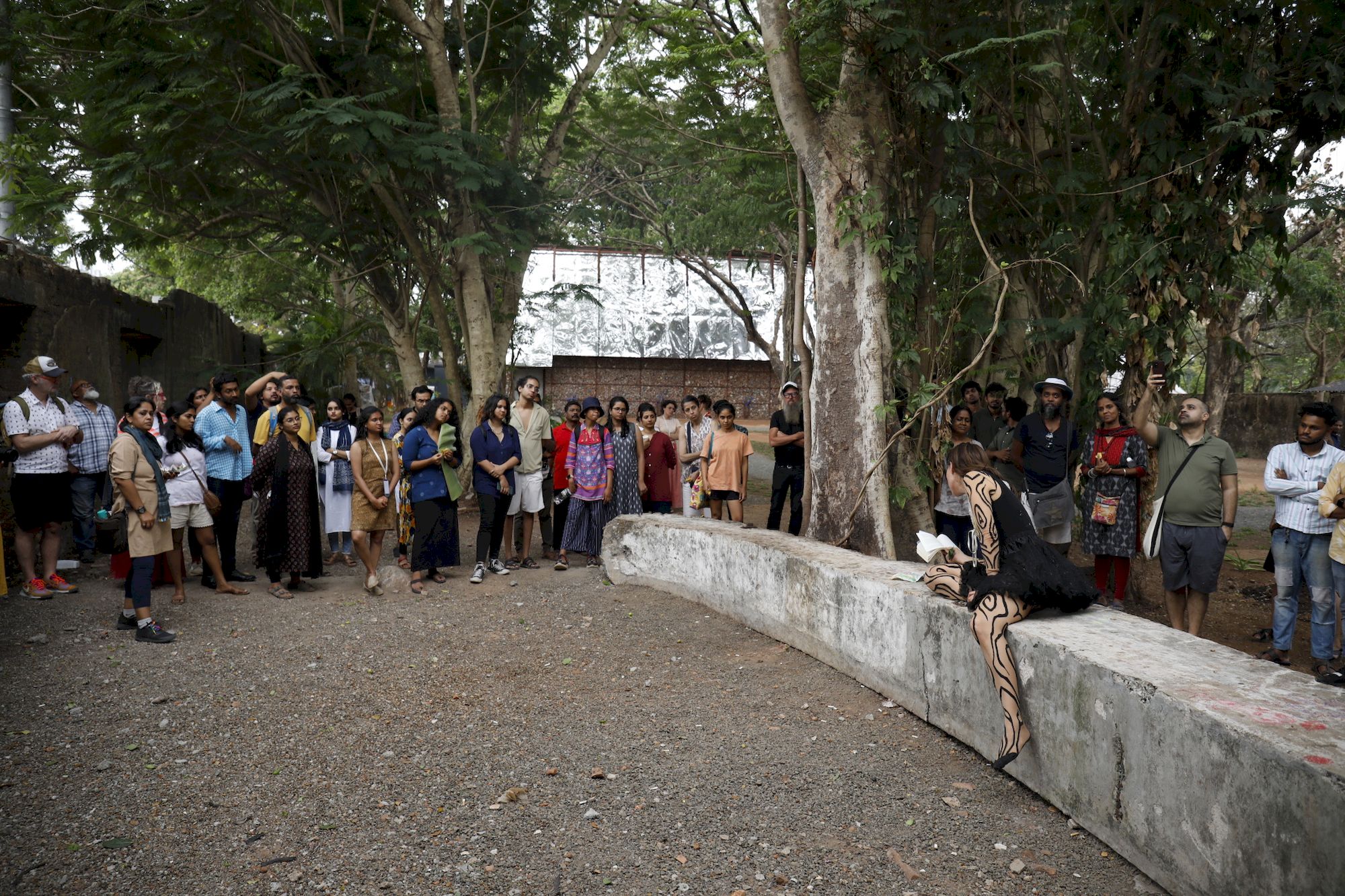
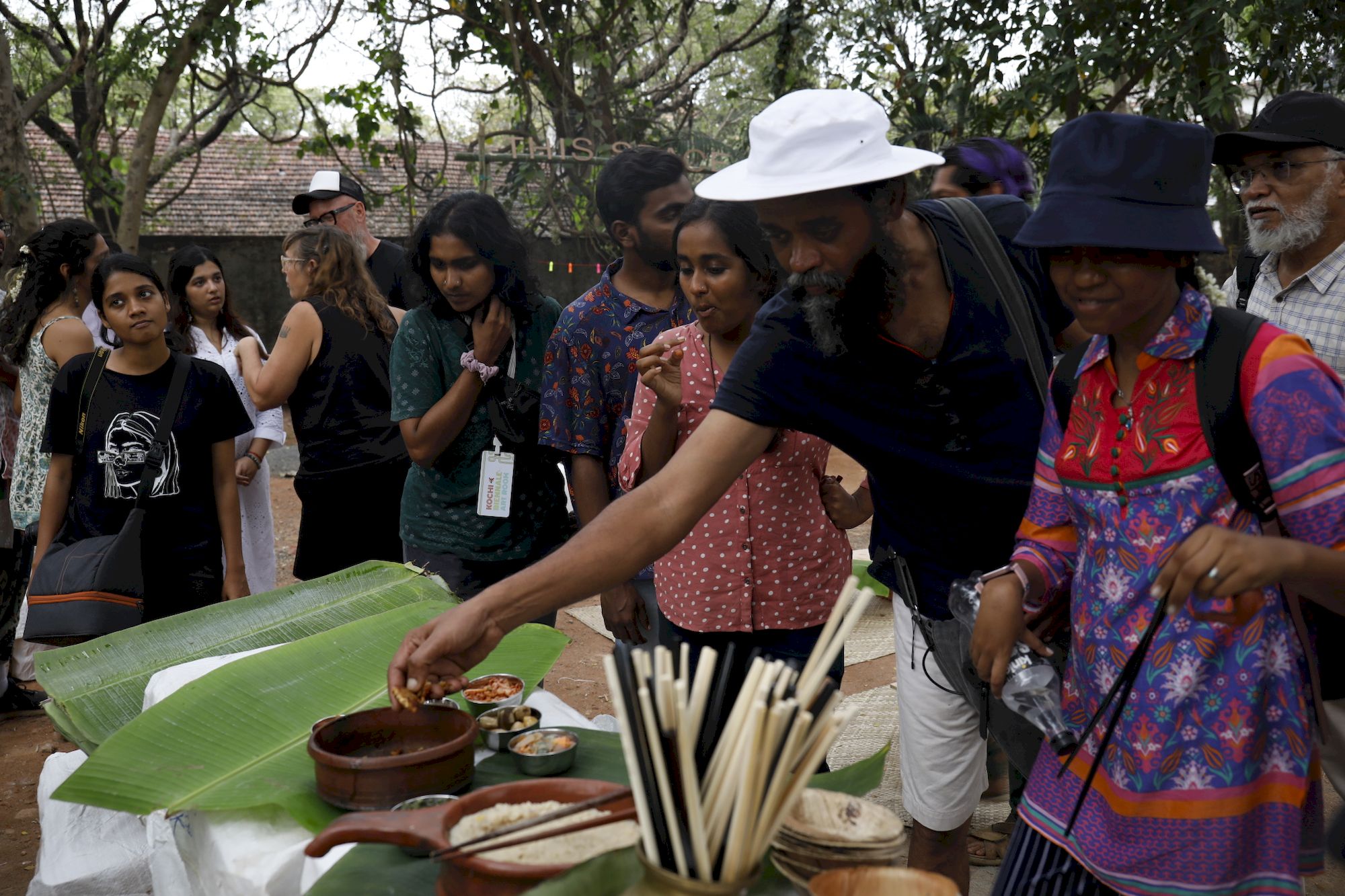
The second round of presentations moved to the topic of “Living Pedagogies”. Pauline Gillard from the Belfort Art School presented “Les Jardins Suspendus” (The Hanging Gardens), an experimental and participatory urban agriculture project. In collaboration with her students, Pauline remodeled several gardens including the creation of a pond, installing beehives and planting trees. The project also involved workshops about botany and gardening that aim to bring the participants closer to the ecological systems that surround them.
Les jardins suspendus:
Xavier Fourt represented the collective Bureau d’études and was mainly talking about “Ferme de la Mhotte“, a social project at the crossroads of culture, agriculture and education in rural central France. The community operates through a self-organized system of councils and assemblies, while rejecting individual property. By exploring the concepts of solidarity economy and open learning structures, the project serves as an experimental platform for rural living and farming. Xavier emphasized the importance of subsistence as an art form and hopes to inspire the growth of sustainable small farms not only in France but worldwide. The discussion revolved around their participation in the School territory of the Valleys du Chamarron where the Ferme de la Mhotte is located, the dynamic nature of a curriculum in living pedagogies, interdisciplinarity in art & design education and non-anthropocentric cartography.
The next talk introduced “The School of Soil Futures“, an online initiative to support social and ecological justice from across the world. Artists, ecological activists and other practitioners share their knowledge and especially their practices from everyday life within their respective communities and environments. Represented by Anna Santomauro from the UK based Arts Catalyst as well as Gatari Kusuma and Sanne Oorthuizen from the Indonesian collective Struggles for Sovereignty, the talk touched different aspects of their activities and how they impact ecological issues faced by the participants. The Indonesian perspective highlights the fight for self-determination over essential resources in the midst of the ecological crisis and capitalist influences. During the discussion, the participants explored the benefits and obstacles of collaborating remotely via online communication. Additionally, the decision to use the term “school” in the initiative’s title was questioned and discussed.
A very inspiring approach to nature education was presented by Kush Sethi, an ecological gardener and forager who works in the mega-metropolis New Delhi. He shared his personal story of how he became interested in wilderness and the struggle to preserve different types of natural environments. Concerned about the impact of climate change and inspired by resilient forest ecosystems, Kush developed strategies to encourage people to fully immerse themselves in nature and experience her with all their senses. From moonlight forest walks to urban foraging and cooking, the activities merged more and more with artistic practices. Over the years other projects evolved: the creation of small urban gardens imitating aspects of wild ecosystems and creative teaching approaches with art & design students.
The last talk of the evening by Nora Hauswirth from Tera Kuno, focused on sustainable farming and community work near Manaus, Brazil. Although situated in one of the most productive ecosystems of the world, the inhabitants of Manaus and other cities of the Amazon basin mainly consume food that is imported from other parts of Brazil. In collaboration with the agroecologist Emerson da Silva, the project ‘Arte & Escola Na Floresta‘ supports indigenous practices of food production and merges them with agroforestry. By integrating trees into agricultural production, a forest ecosystem is mimicked which creates various advantages for organic food production. Through workshops and collective activities, they managed to lure the urban population of Manaus into the rural landscapes that surround them and bring them into contact with different aspects of natural ecosystems as well as food production.
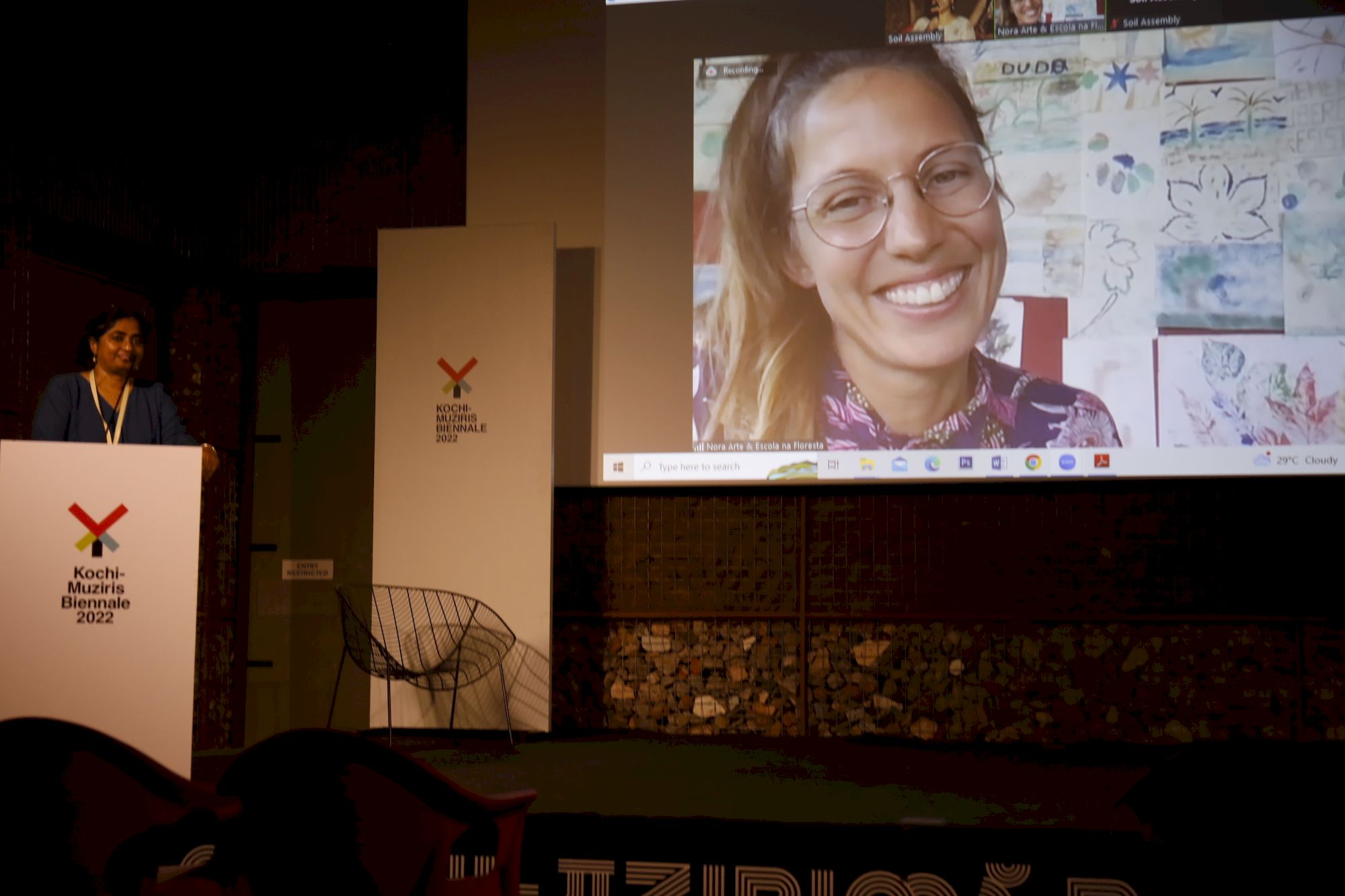
The panel discussion brought up various perspectives on pedagogy and tactics for bridging the gap between urban and rural communities. The issue of neglecting non-human entities in conversations and the unintentional or intentional spread of plant species across different continents was also addressed.
Third and final day of symposium: communities and food transportation
On the third day of The Soil Assembly, the participants had an opportunity to dive deeper into artistic practices around soil and plants by joining the workshops of Kush Sethi, Aastha Chauhan and Suresh Kumar. Either advancing the previous day’s activities or starting something entirely new, but always experiencing those living pedagogies that were so passionately discussed earlier.
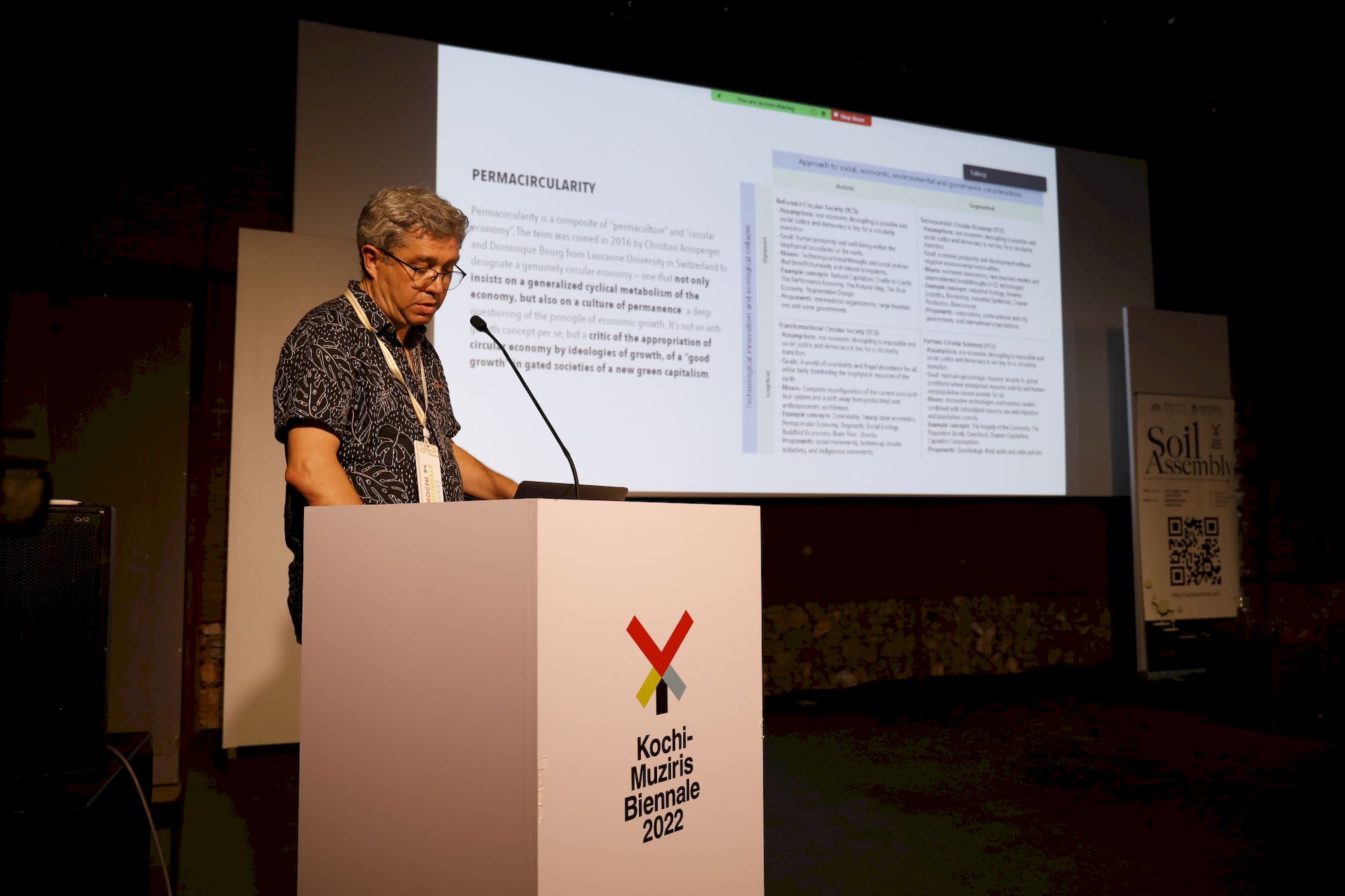
Back in the cozy assembly hall, Ewen Chardronnet introduced the topic of “Food transportation, climate change and ocean trades”. He highlighted the great acceleration and globalization that has occurred since the 1950s, and the immense contribution of our current system of food production to greenhouse gas emissions. Ewen then summarized a recently published study showing that especially the emissions attributed to food transportation are much higher than previously estimated. Around 90% of food related greenhouse gas emission can be attributed to transportation alone. He also touched on the issue of food waste in transports and explored strategies to reduce food transportation impact on climate change, including eating locally grown and seasonal food.
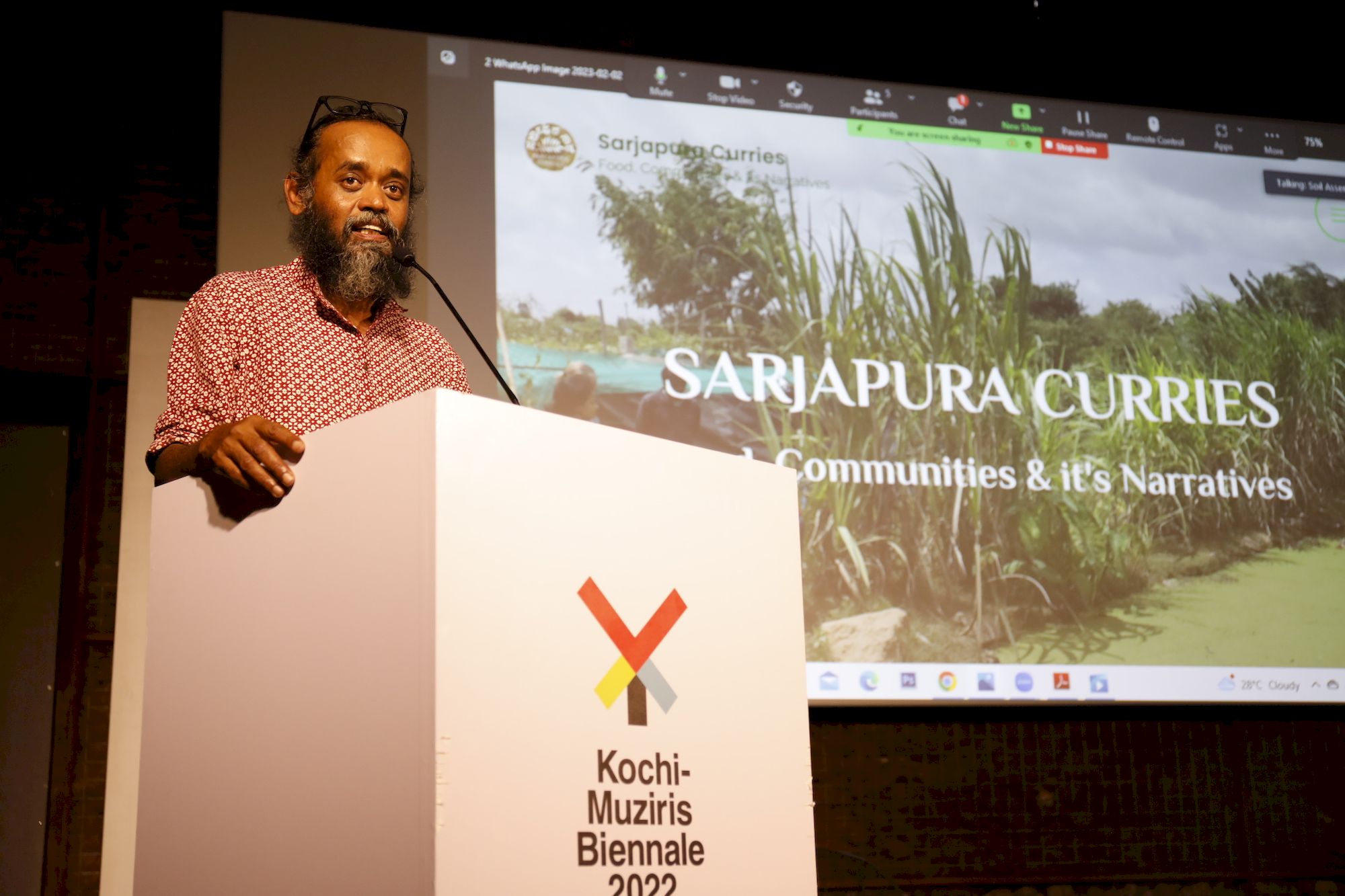
Suresh Kumar, who was also leading one of the workshops, then took a dive right into the challenges of local food production in Bangalore, India. During his presentation, Suresh showcased a video of a local farm situated on the outskirts of the city that grows a diverse range of organic vegetables using heirloom seeds. He then introduced his initiative, Sarjapura Curries, which focuses on producing hyperlocal vegetables and edible weeds and is also involved with community building. He examined how the movement of people between continents leads to the displacement of seeds and plants and how the production of cash crops affects the local flora and vegetable production. The effects can not only be seen in a change of diet, but also in the disappearance of native seeds and the replacement of old varieties with hybrids that suit the modern capitalist economic and social system. Suresh therefore strongly advocates using local heirloom seeds for organic agriculture. The discussion revolved around the benefits of a healthy diet and the importance of circulating knowledge about edible and medicinal plants in the communities. One of Suresh’s anecdotes beautifully illustrates a central problem of our times: while archiving traditional recipes he noticed that although the instructions have survived, the ingredients are no longer available.
Suresh Kumar on Sarjapura Curries:
Suresh’s very personal story was followed up with a presentation by Gabriel Gee, who co-founded the TETI group and was involved in editing the book Mobile Soils, which was introduced on the first day of The Soil Assembly. Gabriel described the difficulties he had when trying to buy local fish in several European port cities and the underlying perversions produced by a capital-driven market system. Using Atlantic cod and Pacific squid as examples, he showed how traditional coastal cuisine can no longer be sustained by locally caught fish and therefore relies heavily on long distance transportation. Gabriel then introduced several TETI projects revolving around artistic research, cultural dialogue, migration routes of traditional recipes and shipping containers as channels of connectivity.
Rob La Frenais began his talk with his own family history as a descendant of French immigrants that came to India in the 18th century and the strange circle that he made by living back in France today. He then introduced the project Future of Transportation, beginning with its history at Srishti Manipal Institute. The project is not involved with the transport of food, but rather with the highly problematic reality of human mobility and a variety of artistic interventions around the topic. Rob not only showcased work curated by himself but also other projects related to the topic, like the retro-futuristic vehicle SEFT-1 that was built to reclaim the abandoned railway networks in Mexico and the journey of Naveen Rabelli in his solar-powered tuk-tuk from India to the UK (read the article in Makery).
The last talk of this session was given by Tim Boykett, who presented the organization Time’s Up and picked up on Ewen’s introduction about the ecological and sociopolitical issues around food transport. He argued that alternative fuels, increased efficiency, and better routing systems are not enough to address the fundamental problems of our current transport system. To offer a tangible solution, Tim presented six currently operating cargo sailboats and several upcoming projects around emission free transport that are currently being developed. He also examined the potential for setting up a sail cargo trading network around the Indian ocean.
During the panel discussion, the participants delved deeper into the economic feasibility of carbon-neutral transportation and the policies required to encourage more of such ventures. Additionally, they explored the art of gardening, food preparation, and transport, highlighting their connection to permaculture principles and community work.
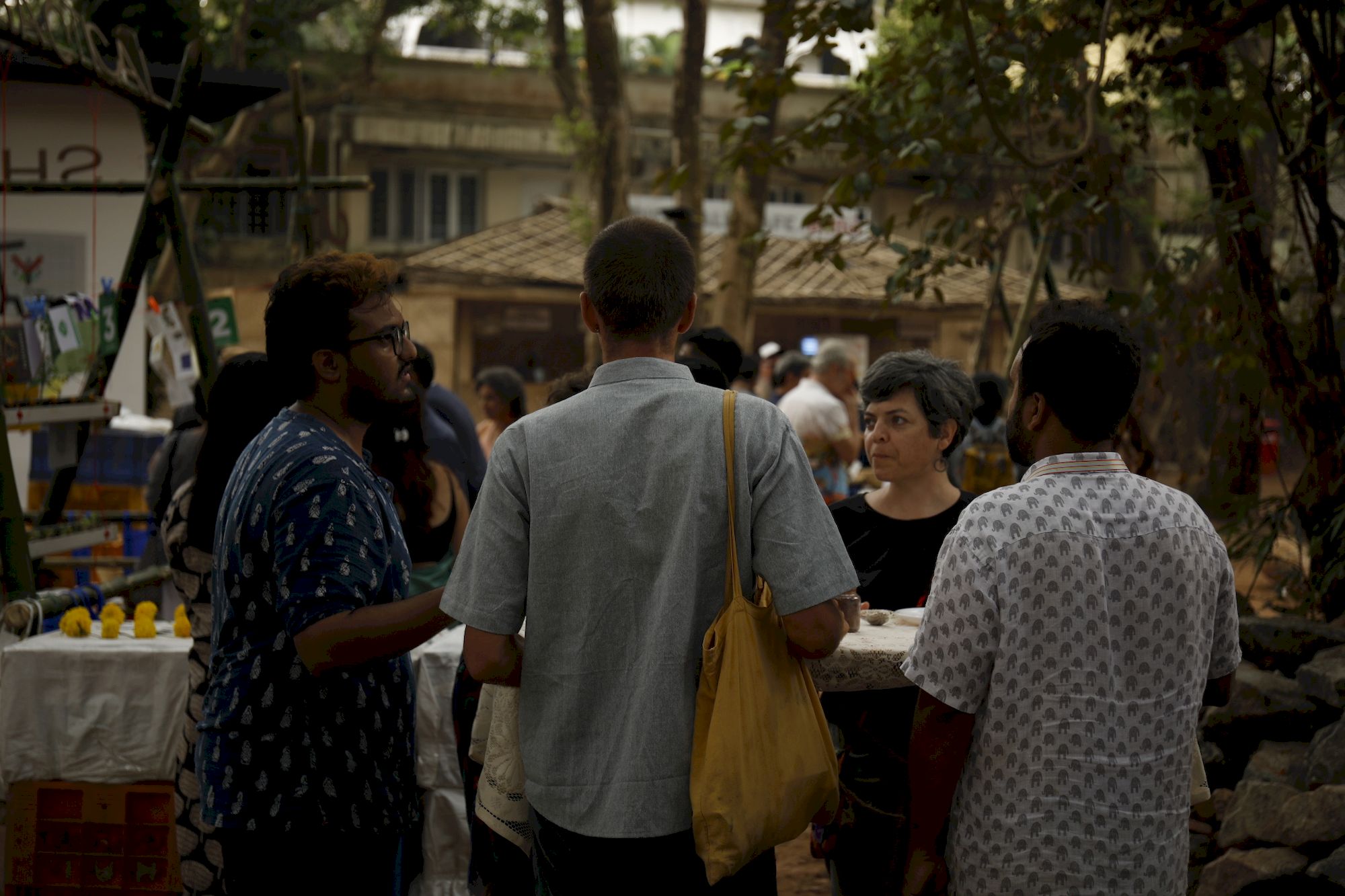
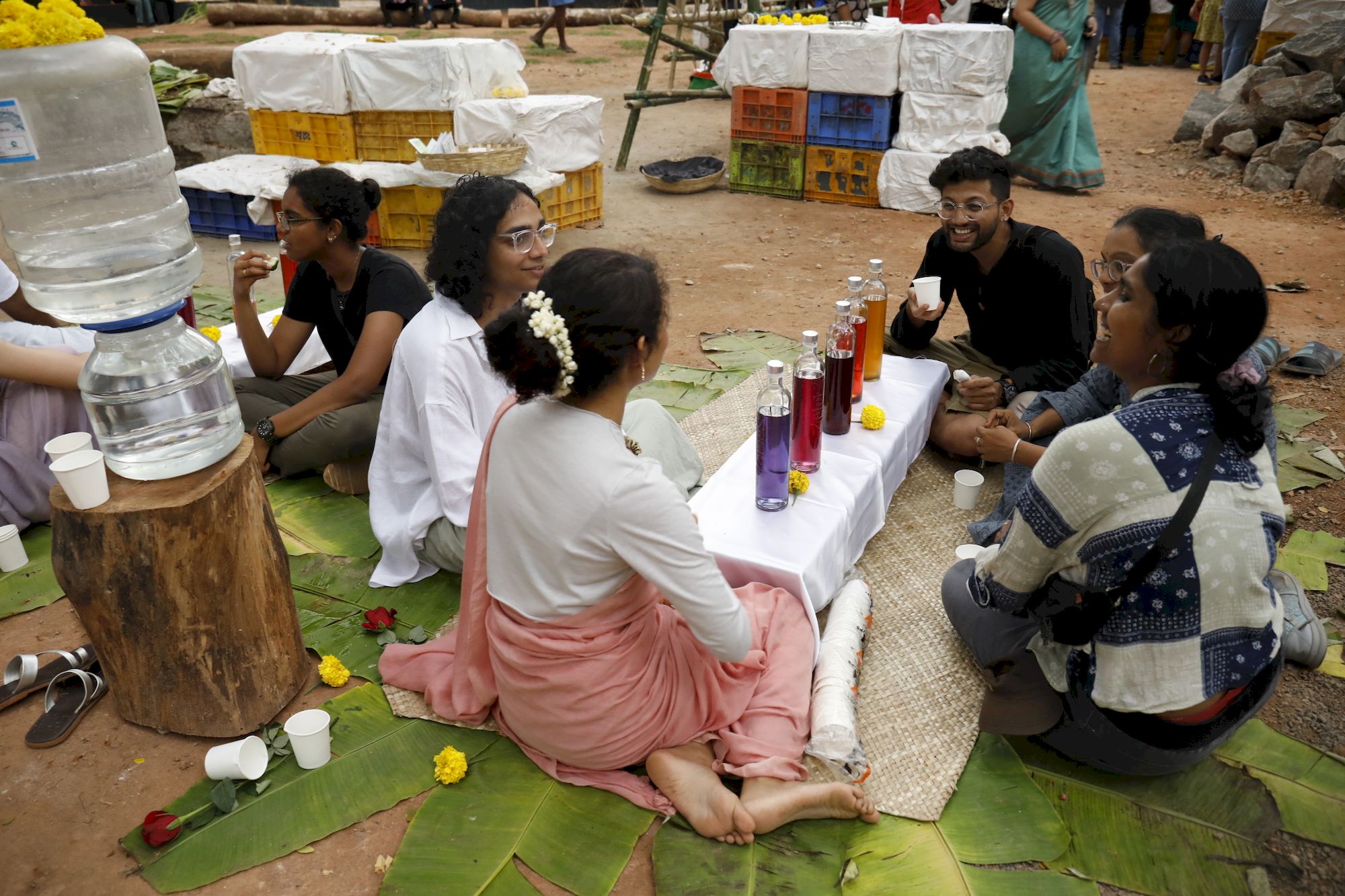
The final session of The Soil Assembly ventured further into the topic “Living Projects & Communities”, which was already addressed on the second day. The session commenced with a presentation by Aastha Chauhan from Srishti Manipal Institute, who discussed Community Radio with special focus on a project in Uttarakhand, India. She pointed out the project’s philosophical connection to regional activism such as the “save the seeds” movement and the protest against the construction of the Tehri Dam. The region faces many challenges, such as severe forest fires, sinking land due to large construction projects, climate change and urban migration. Aastha examined how the Community Radio helps to address many of these issues by connecting and uniting the rural population, spreading information into otherwise isolated areas and providing opportunities for education. Interestingly, most of the volunteers working for the radio are also farmers who bring their food and seeds to the station, contributing to an exchange of practices and food autonomy.
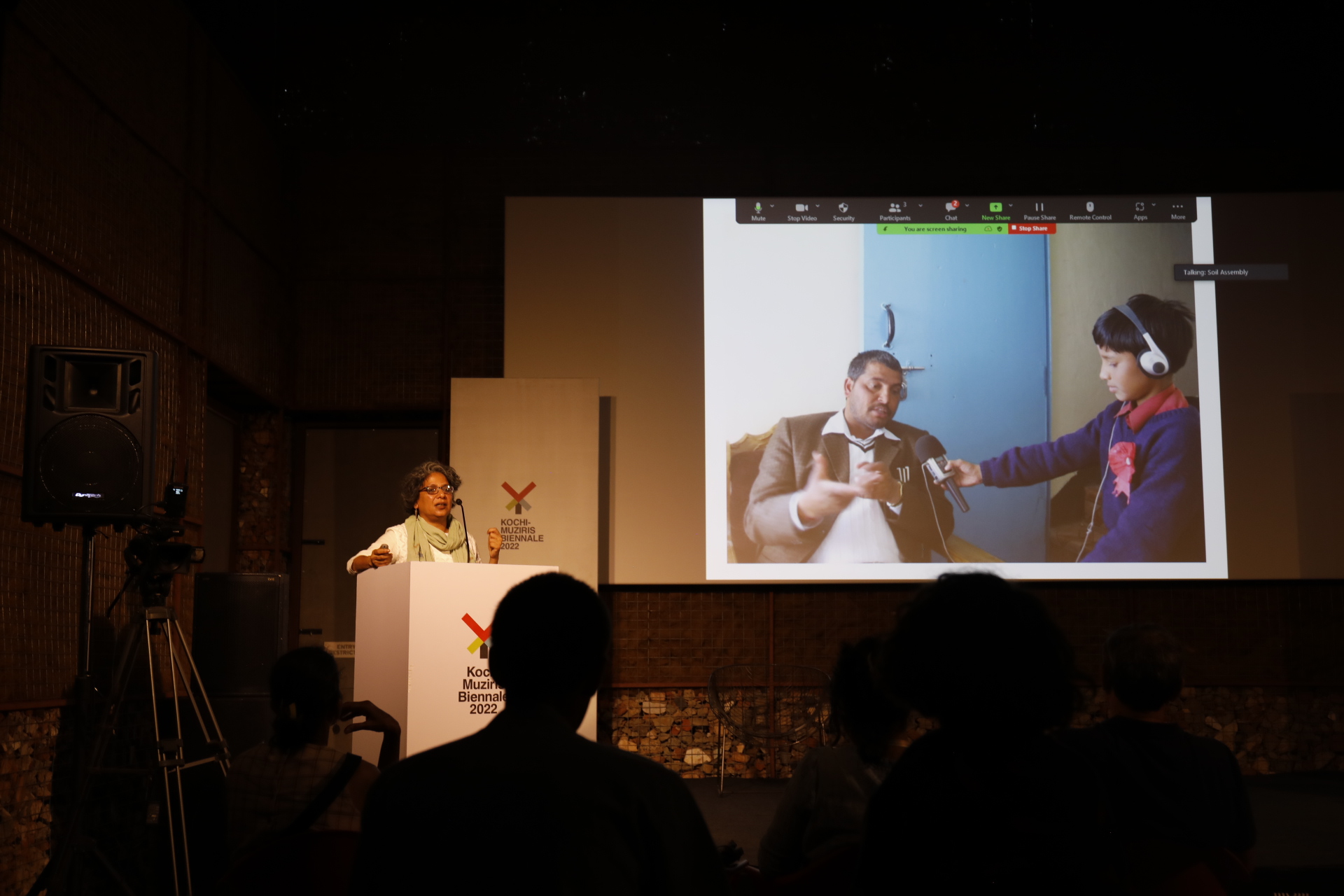
The next presentation revolved around the power of storytelling and how it is harnessed by the project A Growing Culture to build global solidarity and challenge the false narratives that led us into the disastrous situation we are currently facing. Loren and Rohan reminded us that we are producing more than enough food to feed the global population, and yet around 1 billion people remain hungry. However, this is only the visible part of the problem and it cannot be tackled without addressing the underlying issues such as inequality and an extraction mentality in neoliberal systems. Hence, there is a pressing need to rethink and reconstruct our food system while re-evaluating our role in the ecosystem.
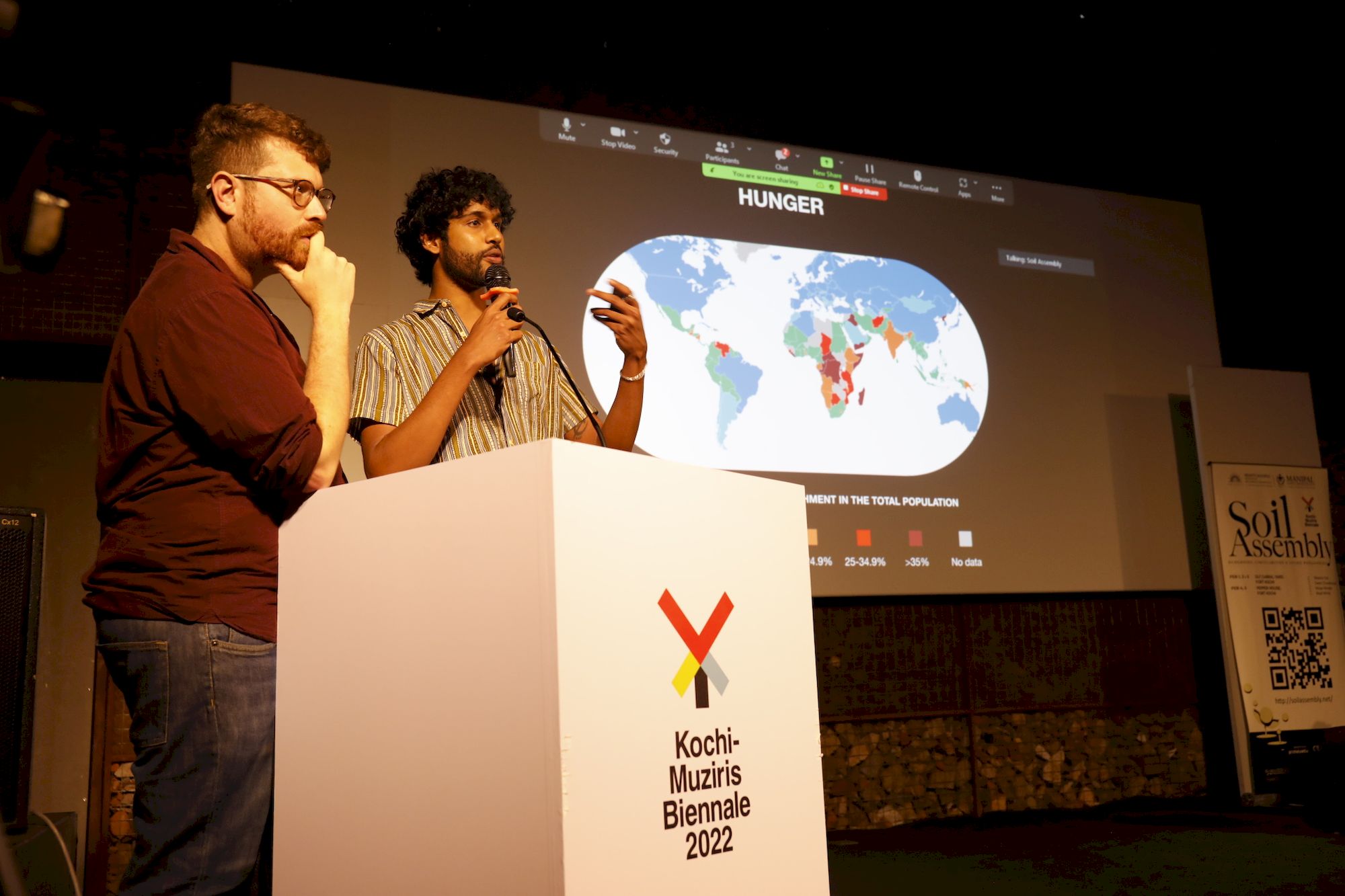
Marc Dusseiler from Hackteria spoke about the network’s history of collaborative research and the activities of their numerous international partners. He pointed out which influences shaped his way of thinking and how he understands the terms ‘open science’ and ‘radical transdisciplinarity’. After presenting various projects from the last 10 years of working in this context, he focused on a recent international and interdisciplinary initiative called UROŠ (Ubiquitous Rural Open Science Hardware).
Representing Food Culture Days, Margaux Schwab spoke about her experience while organizing events with a focus on the intrinsic link between food and ecology. She aims to engage the public in issues such as the relationship with nature, seeds, water, land, air, and cultural identity. In addition to formats, such as exhibitions and performances, Margaux organizes a biennial event that brings together artists, scientists, farmers, cooks, and other experts to engage with food as a research subject and tool for interaction.
At the end of the day, there was finally enough time to discuss all the questions that came up during the presentations: how community governance improves soil health and biodiversity; how new ideas for workshops and toolkits are playfully developed during temporary gatherings; why imagination is an important part of change; and many more. The discussion got quite heated around the question how environmental and social movements relate to “soil” and “land”, in respect to the complex histories and emotions associated with these terms.
The Soil Assembly continued the next day with the screening of several short films, selected and curated by Vasanthi Maria Dass, which was followed by a panel discussion. The last day, the organizers summed up the event in a final panel and the evening was concluded with Marion Neumann’s film The Mushroom Speaks.
Visit the Soil Assembly website (complete videos of the presentations and panel discussions).
